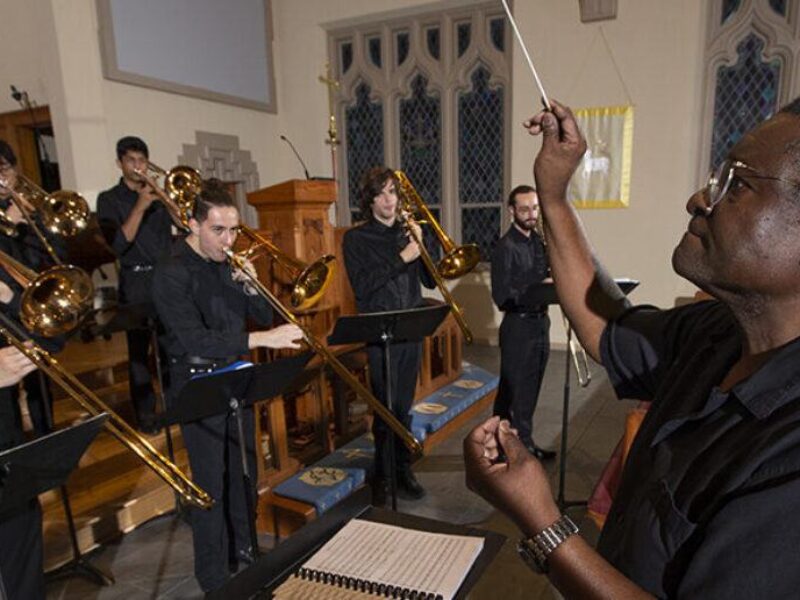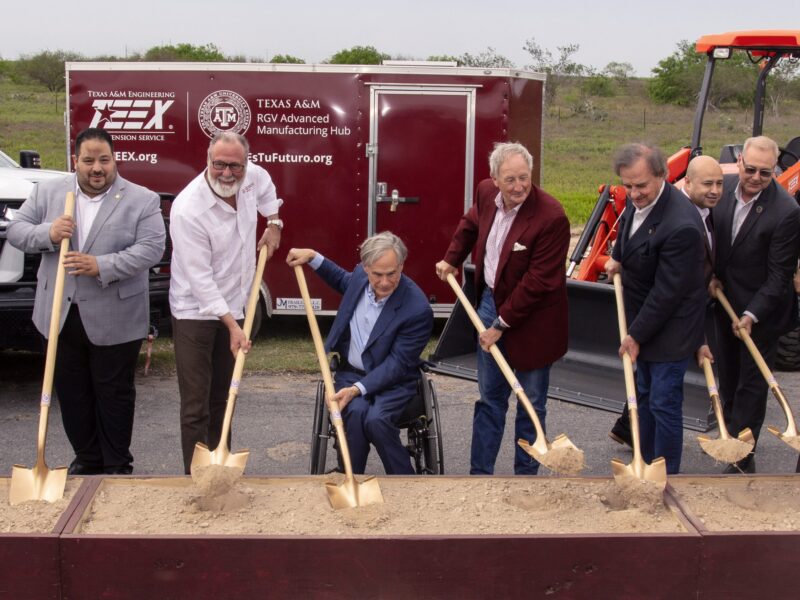Texas A&M Veterinarians Save Schnauzer With Extreme Urinary Blockage
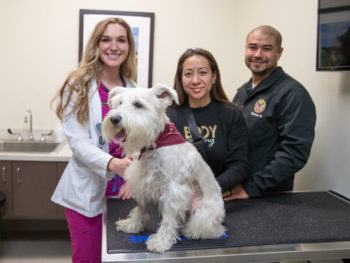
The last thing anyone wants to deal with during the holidays is a medical emergency, but when Max, a 7-year-old Schnauzer, began to have difficulty urinating on Thanksgiving day, his family began an almost week-long journey to get him the care he needed.
They soon learned that Max had a serious blockage in his urinary tract caused by a large number of stones that had formed in his bladder. Surgical treatment was the only option, but it wouldn’t be cheap.
However, a new community outreach program at the Texas A&M Small Animal Teaching Hospital (SATH) was available to help the family afford Max’s lifesaving procedure.
Discovering The Problem
Like most dog owners, Dulce and Guillermo Duron would argue that Max is not just their pet but also a member of the family.
“Max has been in our family for seven years, and he’s always been there for emotional support,” Dulce said. “I was diagnosed with epilepsy a few years back, after a car accident. At that point, I had elementary-aged kids and two teenagers, and it was a lot to handle. I tell everybody, all of the time, that Max saved me.
“He would be at the end of the bed, on top of my feet, as I dealt with a neurological problem and nausea. He went through that with me for months,” she said.
Max’s special role in the family made it all the more alarming when the Durons began to suspect that Max was unwell; on Thanksgiving Day, he started urinating indoors, in seemingly every corner he could find.
“I later realized that that was the last time that I had seen him urinate—after that, it was just droplets,” Dulce said. “It was painful to see. He would try to urinate and then walk away a little and try again. He would do 10 tries in different spots.”
By Saturday evening, Max began clearly showing signs of discomfort, so the Durons rushed him to a veterinary hospital in Houston. The hospital staff diagnosed Max with a urinary blockage, but were unable to do any more before they closed for the night.
Already facing one veterinary bill, the couple decided to take Max to Economy Pet Clinic on Monday in the hopes that the prices would be lower.
“Dr. (Rao) Perla was more than willing to see him and do the tests much more affordably,” Dulce said. “He told us, ‘This is going to be a journey. I’ll be here for anything that you need.’ I was just blown away by how available he was.”
Perla set up a doctor-to-doctor consultation with the SATH and, after discussing Max’s case with a veterinarian at Texas A&M, recommended that the Durons bring Max to College Station for further treatment. Late Tuesday night, they made the two-hour drive from south Houston.
“The finances were still a concern, so we were very transparent with the doctor,” Dulce said. “She offered to empty out his bladder that night so he wouldn’t have to stay overnight. He was so relieved, like a whole new pup.”
Although Max was feeling better, emptying the bladder was only a temporary solution, so the Durons returned Wednesday morning to discuss next steps with Dr. Audrey Cook, an internal medicine specialist and professor at the Texas A&M School of Veterinary Medicine & Biomedical Sciences.
Finding A Solution
When Cook reviewed the X-rays that were taken of Max in Houston, she was shocked by what she saw.
“He had about 80 tiny stones that had gone out of his bladder and were just packed in his urethra,” she said. “Usually, dogs with this problem will have a bunch of stones in their bladder and just a couple that get stuck, but his urethra was just completely packed. I’ve never seen an X-ray like his.”
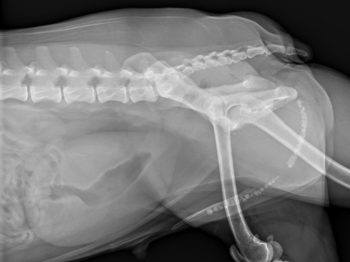
Without intervention, a blockage of this magnitude could soon cause Max’s kidneys to shut down or his bladder to rupture. Knowing how vital the surgery was, the Durons started to explore options for handling the cost.
They soon discovered the Texas A&M Roach Family Student Community Outreach Surgical Program, a program supporting Texas pet owners with limited financial means, who otherwise would not be able to provide their animals with surgical care. The program offers a variety of common procedures, which are performed by fourth-year veterinary students under the supervision of SATH veterinarians.
“We’re trying to get two kids through college and money is just really tight,” Dulce said. “I applied for the program and it said they would get back with us within one to three days, but they got back to us within one to three minutes. By the time I went to the car to try to make some more phone calls, the doctor and business office had already communicated. They relieved my stress in only 15 minutes.”
Once the financial aspects were settled, Cook and Allison Teunis, a fourth-year veterinary student at Ross University who is completing her clinical rotations at Texas A&M, began preparing for Max’s surgery.
They performed a cystotomy—a common surgery used to enter the bladder, most often to remove bladder stones—but soon ran into a roadblock.
“Our plan had been to use a catheter to flush the stones back into his bladder, but they were so jammed that we couldn’t get enough fluid flowing to move the stones,” Cook said.
Because the problem was caused by a few large stones tightly wedged in the urethra, Cook decided during surgery to perform a laser lithotripsy, a minimally invasive procedure that uses a laser to break apart stones.
“Once we smashed the first three stones with the laser, we got enough fluid velocity to push all the other stones back in his bladder, and then Allison scooped them all out,” she said.
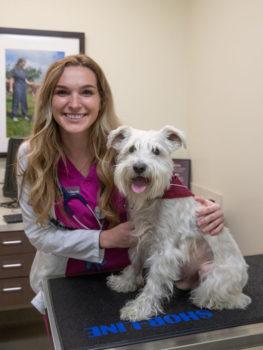
Teunis, who has a strong interest in veterinary surgery, was grateful for the chance to perform her first cystotomy under the guidance of a board-certified specialist.
“Max is such a sweet boy and to be involved in this lifesaving procedure for him was an amazing experience,” she said. “I am absolutely grateful for the Roach fund and Texas A&M for this opportunity.”
While Max is likely to form more bladder stones in the future, they can largely be prevented with a special diet and, if necessary, medications. Plus, his owners are now more familiar with the signs of a blockage and know what to watch out for.
“Max is my first dog,” Dulce said. “I’ve never had a conversation with other pet owners about these types of stones. I don’t understand why I didn’t know about it, but now that I’m aware, my teenagers are also going to be aware, and when they become dog owners themselves, they can be a whole different generation of owners who aren’t blind to the problem.”
Once Max woke up after surgery, it was clear to both his veterinary team and the Durons that he was feeling much better.
As they prepared to head home, Max’s family was looking forward to life returning to normal, both in big and small ways.
“My daughter just got a miniature Schnauzer, a ‘Texas tornado.’ Max is trying to keep up with him and will enjoy playing with his friend again,” Dulce said. “Plus, I can’t wait to see him go potty!”
This article by Megan Myers originally appeared on the School of Veterinary Medicine & Biomedical Sciences website.




